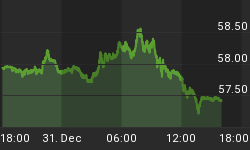Over the past several days gold prices have plunged by over $60 per ounce and silver prices have dropped by close to $3 per ounce. Popular excuses for the carnage include lessening tensions in Iran, falling oil prices, and diminishing inflation fears. However, I am convinced that the decline has nothing to do with changes in the underlying fundamentals for either metal. In fact, with this week's release of yet another record high monthly trade deficit and continued evidence of a rapidly deteriorating housing market, those fundamentals have never been better. How then do I explain the sharp recent declines?
This leg of gold's relatively young bull market has been characterized by sharp down-side volatility. Every time gold and silver appear to be poised to break-out, that is precisely when they get hit the hardest. The reversals are often sharp and quick, come without warning, and defy easy explanation. Reluctant to appear clueless, the media and Wall Street experts confidently identify fundamental causes, but their explanations rarely have anything to do with the decline. This must be extremely frustrating, not to mention costly, for momentum players who routinely buy on strength.
The purpose of these sharp declines is two fold. First, it helps purge the weak hands from the market, including the momentum players, highly leveraged speculators, and "Mad Money" aficionados. Second, it helps interject a healthy dose of fear into the market, and helps erect a steep "wall of worry" for this bull market to scale.
Bull markets hate excess baggage, and before the next big surge higher, all that excess baggage must be ejected. After the momentum players have been burned once too often, the stage will be set for a major advance. Gun shy from previous false break-outs, such players will be too timid to pull the trigger. As such, they will remain on the sidelines, watching in fear as the train finally leaves the station without them.
Many people feel that these declines are orchestrated by central banks or major investment houses. It's possible that the conspiracy theorists have a point. But in reality, it makes little difference. All they are doing is creating excellent buying opportunities for the rest of us. Remember, though they may be able to slow gold's ascent, they can not alter its trajectory. If they could, would gold have really risen from below $300 per ounce to its recent high above $700?
Gold's bull market is far from over. In fact it has barely begun. The fact that each correction is immediately interpreted as being the bursting of a bubble, with precipitous declines looming on the horizon, actually supports this view. Genuine bull markets, especially those that take on bubble like proportions, seldom fail to make record highs. In the case of gold and silver, neither has achieved such milestones. When prices are adjusted for inflation, they haven't even come close. Believe me, by the time this bull market really ends, those highs will be distant memories.
Remember, this metals bull market has its roots in a looming global currency crisis, as the dollar, and those other fiat currencies backed by dollar reserves, are increasingly shunned by enlightened savers. As they re-discover gold as an alternative, its appeal, and therefore its price, will ultimately surge. The global economic imbalances are stretching to a breaking point. The dollar's role as the world's reserve currency, and the borrow and spend U.S. economy it supports, teeter in the balance. This may well be one of the last great buying opportunities of this leg of the bull market. Do not let it pass you buy. If ever there was a gift horse, this is it. Rather than staring dumfounded into its mouth, simply reach into your pocket and grab your last remaining greenbacks and buy all the gold and silver you can get your hands on.
Don't wait for the real break-out to occur. Protect your wealth and preserve you purchasing power before it's too late. Discover the best way to buy gold at www.goldyoucanfold.com, download my free research report on the powerful case for investing in foreign equities available at www.researchreportone.com, and subscribe to my free, on-line investment newsletter at http://www.europac.net/newsletter/newsletter.asp.
















